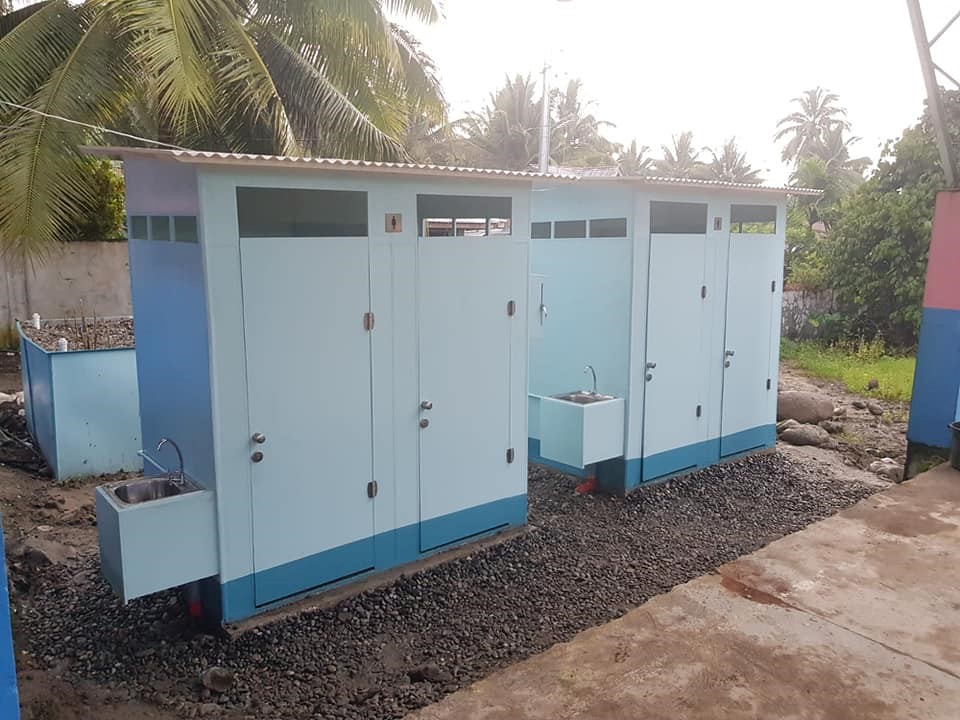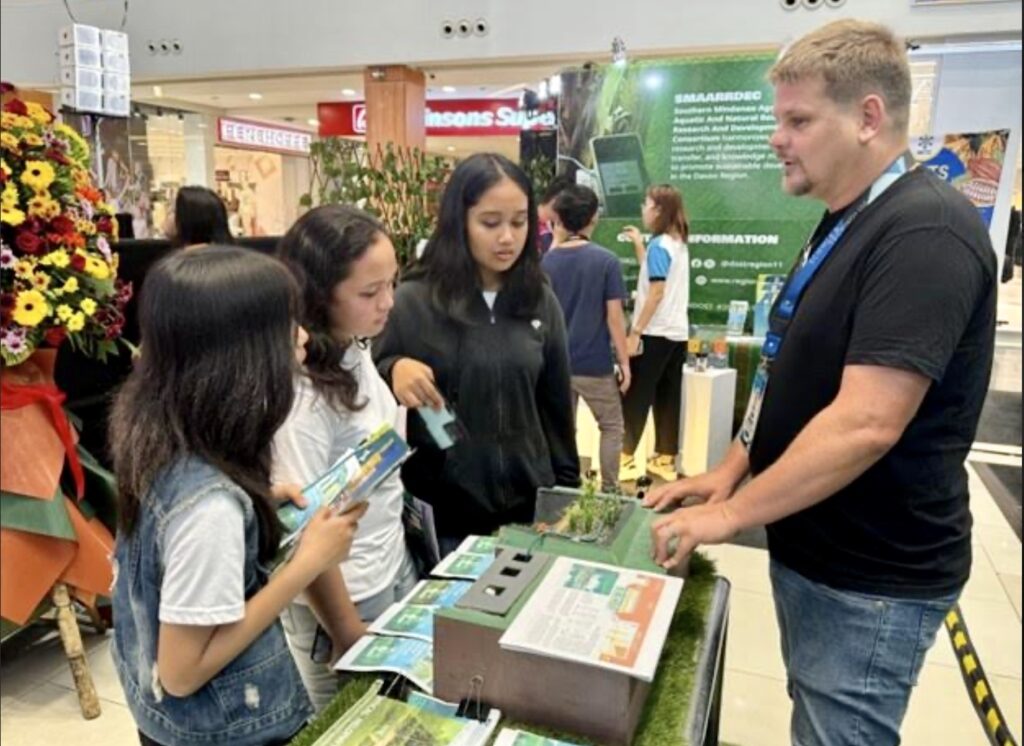A technology using tambo grass can efficiently purify wastewater
By Henrylito D. Tacio
Most Filipino consider grass as weeds. In rice production, for instance, farmers always consider weeds as a limiting factor. If not controlled, studies showed weeds can reduce yield of rice from 44% to 96% by way of competition for the limited resources for growth and development such as nutrients, sunlight, and water.
But there are grasses that may be considered as weeds but still have some uses. Tambo or bugang (scientific name: Phragmites vulgaris) is one such grass. This erect grass is widely distributed in the country at low and medium altitudes. It is locally abundant in shallow swamps and muddy streams.
Unknowingly, tambo has several uses. The hardy stems are used as firewood, while the fiber can be utilized for making strings and ropes. Where bamboo is not available, used for roofing ribs or thatched roofs. In Germany, the use of thatched roofs for vacation houses is a status symbol. In the Philippines, dust brooms – called walis tingting – are made from the panicles of tambo.

But there’s a better way of using it that will benefit not only people but the environment as well. A Davao-initiated scheme, which the regional office of the Department of Science and Technology (DOST) promotes, is using tambo in treating wastewater before it is discharged.
The system’s effectiveness was evaluated by a laboratory accredited by the Department of Environment and Natural Resources (DENR) at the University of Immaculate Conception – Science Resource Center in Davao City.
The findings indicated substantial removal rates for several wastewater parameters, including effective pH neutralization, a total suspended solid’s removal rate of 99-100%, a reduction of fecal coliform and coliform by 95-99%, and a biochemical oxygen demand removal rate of 98%.
The technology is the brainchild of Engr. Sean Ligtvoet, a Dutch national who works as project senior technical specialist at the Davao DOST. He first caught the attention of Dabawenyos when he launched the Profitable Sanitation Facility (PSF) project.
Actually, the initiative was a collaborative effort between the regional DOST office and the HELP (Hydrology for the Environment, Life, and Policy)-Davao Network, which consists of various volunteer organizations and individuals from the city.
The objective of the PSF project was to provide the city’s urban poor with access to clean toilets and showers, as well as high-quality drinking water supplied by the Davao City Water District (DCWD).
“It’s a public comfort room with five toilets, designed for a capacity of 200 users a day,” Ligtvoet explained. “The wastewater goes to a septic tank below the facility. After staying there for four to five days, the wastewater is pumped up and discharged on a 12-square-meter helophyte-filter system.”
The effluent—liquid waste or sewage—from the filter system is discharged to the nearest surface body of water, since the parameters conform with B-class effluent standards stated in the Administrative Order issued by the DENR on water-quality guidelines and general effluents.

The method the PSF uses is called vertical helophyte-filter system (VHFS). The VHFS uses helophytes or tambo to effectively purify and eliminate contaminants from wastewater. By utilizing the inherent filtering capabilities of the plants, the system provides an efficient method for wastewater treatment.
“The VHFS is a low-cost and nature-based wastewater-treatment system, which uses a sand filter (with multiple layers of filter substrate) and reed plants to treat grey and black wastewater,” Ligtvoet explained. “The system is very low-priced to install, needs relatively less maintenance, has no consumables and is easy to understand.”
According to him, a secondary treatment system facilitates the initial processing of wastewater through a primary treatment phase, which generally involves septic tanks that are fitted with grease and sediment traps. Subsequently, the wastewater is pumped to a reed bed.
As it traverses a layer of filtering materials, the system effectively eliminates the majority of remaining contaminants. Ultimately, the treated effluent is released into a clear water well, making it suitable for various applications, such as irrigation.
In the Philippines, only 10% of wastewater is treated. “Metro Manila alone generates about 2 million cubic meters of wastewater every day,” said Jonathan Breton, general manager of Grundfos Philippines.
The composition of wastewater primarily consists of water, accounting for 99.9% of its content. The remaining 0.1% comprises organic matter, microorganisms, and inorganic compounds. Wastewater effluents are discharged into various environments, including lakes, ponds, streams, rivers, estuaries, and oceans.
Health experts claim wastewater poses significant risks due to its potentially harmful effects. Toxic substances present in the effluent can disrupt aquatic ecosystems. When substantial quantities of biodegradable materials are introduced into the water, organisms begin to decompose them, leading to a considerable consumption of dissolved oxygen.
According to scientists, dissolved oxygen (DO) is essential for the survival of marine life. DO is a measure of how much oxygen is dissolved in the water(the amount of oxygen available to living aquatic organisms). Depletion of DO can pose severe threats to aquatic species inhabiting these waters.
In addition, the release of wastewater can result in pollution of the water bodies into which it is discharged. This pollution can inflict both physical and biological harm on ecosystems such as mangroves, seagrasses, and coral reefs, while also contributing to air pollution and affecting the surrounding areas.

The VHFS is a project under the Davao DOST regional’s Wastewater Treatment System Upgrading Program (WATSUP). This program aims to introduce low-cost, nature-based wastewater treatment solutions to benefit local micro-, small, and medium-sized enterprises (MSMEs), public facilities, and small communities.
Ligtvoet, an engineer who studied water management at the Rotterdam University of Applied Sciences, came to Davao City in September 2012. “I had previously conducted case studies on flood risk reduction in Manila, but I was unfamiliar with Davao City and the Filipino culture,” he recalled.
Initially, he aimed to address the flooding issues. However, after a week, he reassessed his priorities. “I realized that the problem of inadequate wastewater management was significantly more critical than flooding,” he said.
When he shared his proposal, it did not receive much elation. “I noticed that most individuals paid little to no attention to proper wastewater management,” he remarked, indicating that the situation shifted when Regina Lopez was appointed as the environment secretary by then President Rodrigo R. Duterte.
“Proper sanitation has always been the most effective tool to preserve public health,” pointed out Ligtvoet, who is married to a Filipina. “That’s why I feel privileged to be able to improve the sanitary status in areas where it’s most needed.”
The idea which Ligtvoet initiated has gone a long, long way already. A report from DOST Davao said that 34 VHFS units have been formed in seven communities and four local government units, collaborating with 20 private organizations and 31 adopting partners.
“The system has benefited numerous communities, including informal settlers, by providing essential sanitation facilities that promote public health,” the DOST report said. “In addition to domestic use, it also manages wastewater from various sectors, such as restaurants, resorts, hotels, food processing facilities, slaughterhouses, public markets, poultry farms, piggeries, and hospitals.”
Already, the technology has extended its reach beyond Davao City and is now being implemented in Cotabato, Oriental Mindoro, and Pampanga. There are also intentions to apply the system in Dinagat Islands within the Caraga Region.
“We are also planning to further nationalize the technology slowly but surely,” Ligtvoet said. “We will also deploy one system in Pekalongan in Central Java, Indonesia.”

